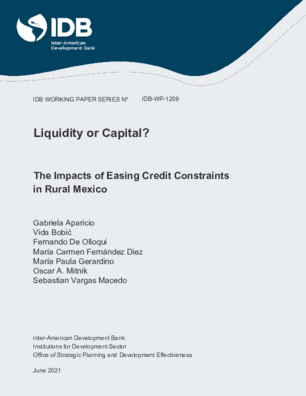Liquidity or Capital?: The Impacts of Easing Credit Constraints in Rural Mexico
Date
Jun 2021
This paper evaluates the effectiveness of easing credit constraints for rural producers in Mexico through loans provided by a national public development finance institution. In contrast to most of the existing literature, the study focuses on the effect of medium-sized loans over a two- to four-year time horizon. This paper looks at the effects of such loans on production and investment decisions, input use, and yields. Using a multiple treatment methodology, it explores the differential impacts of providing liquidity for working capital versus providing credit for investments in fixed assets. It finds that loans increased the likelihood that producers grow and sell certain key annual crops, in particular among recipients of working capital loans. It also finds significant effects on production value and sales (per hectare), with similar impacts for recipients of both types of loans, with gains in yields driven by changes in labor quality and more intensive use of key inputs. There is no evidence of significant effects on the purchase of large machinery, but there are impacts on the acquisition of cattle. Overall, the results reported in this paper suggest that lack of liquidity is at least as important as lack of funding for new investment in capital for rural producers in Mexico. Producers benefit from easing their credit constraints, regardless of the type of loan used for that purpose.




